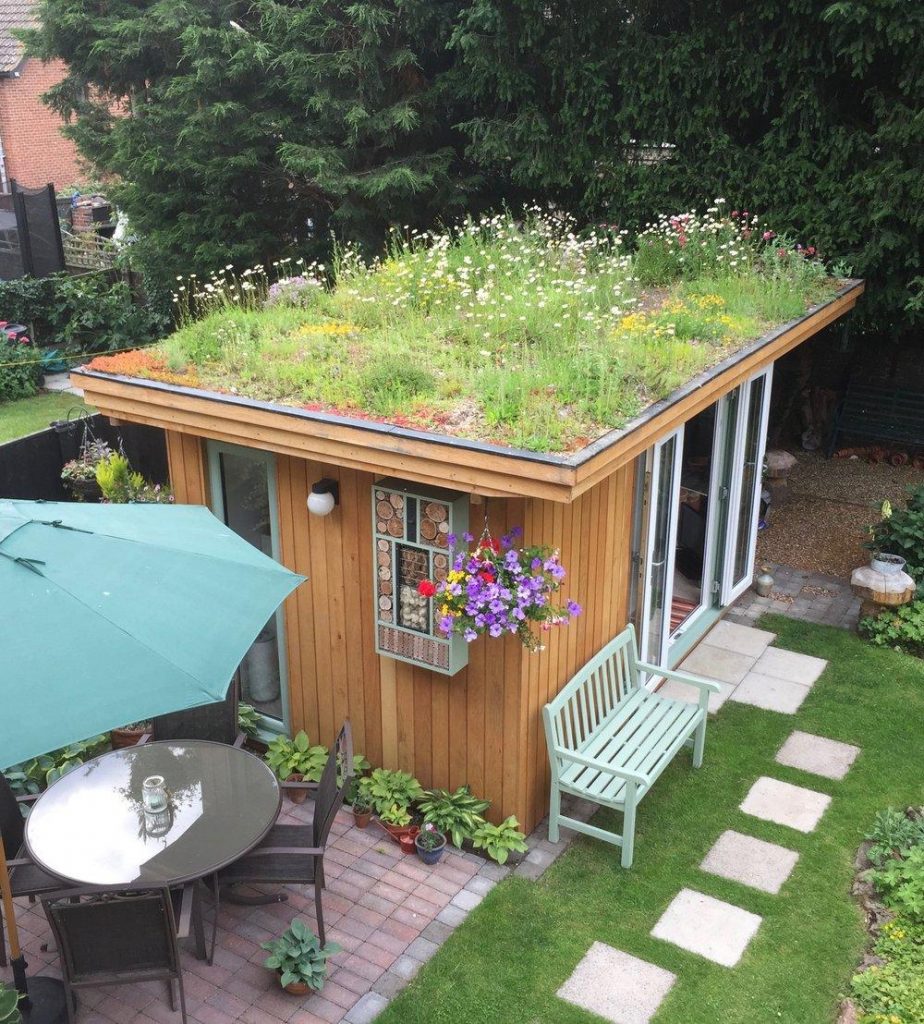Green Roofs
What are Green Roofs? Are they some new hippy trend concocted by eco-warriors, or have they been in existence through history? The Hanging Gardens of Babylon were one of the first examples of green roofs with plants growing on terraces at each level and tumbling over the walls. In some Scandinavian countries, houses were traditionally built with sod roofs. Turf houses existed during the Viking period. In the 1900’s Germany was constructing buildings with green roofs. By the 1960s, the trend had spread across Europe.
Look out of your bedroom window, what do you see? Is it line after line of tiled rooftops with the odd one that has some solar panels on it? How dull, boring, and lifeless is that view? Roof spaces also seem to be wasted opportunity to green up our environment. Only 35% of the world’s green spaces are left. Is it then not time that we considered other areas that can help to create a greener environment that would ultimately benefit us and our planet?

Photo Credit: Manoj Malde
A roof space that has a negative impact on the environment. It will add to the heat island effect. Surface rainwater will simply drain away into the underground sewage system. More importantly, it is a dull grey space that does nothing for our wellbeing.
The same empty, dull grey space transformed. The land lost to the footprint of the building has been greened up into a useable area to socialise, relax, entertain, and dine. The choice of plants provides biodiversity for wildlife, absorbs rainwater slowing down the flow of surface water. It has also added value to the property.

Photo Credit: Paul Debois Garden Design Credit: Manoj Malde
Green roofs are also known as living roofs. They fall into two categories of intensive green roofs or extensive green roofs. With both types, waterproofing and drainage are a must as you do not want the roof to leak. Any excess water has to be able to drain away. In simple terms, intensive green roofs are flat. They are what we call roof gardens planted with trees, shrubs, grasses, and herbaceous perennials like any other garden. Whether these are grown in containers or raised borders, they are much more high maintenance than extensive roofs. They also require a lot more consideration in their installation. However, they provide a social space, and planting can provide food and habitat for wildlife.
Extensive green roofs are pitched and work best at an angle of 30° or less. They are much easier to install and require a thin layer of soil. Sedums are the most popular choice of plants as they have a shallow root system. Grown as matts, they are easy to plant up. However, sedum can suffer through very hot spells by going dry and patchy in areas, but it does recover quickly when the rains start, and it gets watered. A mix of sedum, wildflower seeds, grasses, small bulbs such as Muscari or Narcissus tete a tete, and sempervivums will provide year-round interest and biodiversity for wildlife.
What are the benefits of Green Roof?
Roofs are wasted spaces. Greening a roof can help blend that space and the building with the landscape. By installing a green roof, you are creating a natural habitat of flora and fauna. Increasing biodiversity helps wildlife and pollinators, who play a vital role in the production of our food crops. Having more green spaces than hardscaped areas helps to reduce the heat island effect. The heat island effect decreases air quality and increases the production of pollutants. It also decreases our water quality. Warmer waters entering streams and rivers begins to stress the eco-systems. Green roofs provide added insulation to a building, reducing its carbon footprint by lowering the buildings running costs.
Green roofs slow down the flow of water, reducing the risk of flooding. They also help to absorb carbon dioxide and pollutants. The vegetation on green roofs helps to bind the dust and toxic particles. The substrate they are grown in will filter out nitrates, pollutants, and heavy metals. This further increases air quality, benefitting both humans and animals.
Waterproofing will increase the life expectancy of the roof. They will also help with noise reduction and soundproofing. Intensive green roofs add value to a property by maximising the use of the space for socialising, entertaining, and leisure. Some restaurants and corporate organisations have even used their roof space to grow crops for their kitchens. The land lost to the building’s footprint is also replaced by usable space.

Credit: DM Roofing
An example of an extensive green roof where sedum matting has been used to green up the roof space.
Do green roofs require planning?
With new builds of both homes and office blocks, incorporating a green roof may help you gain planning approval. Many local authorities favour planning proposals that include green roofs within the applications, especially if it meets their policies for creating a sustainable environment. Therefore, green roofs are more desirable. It is also advisable to check with your mortgage lender and your insurance company too.
However, it is always a good idea to check with your local council before proceeding, especially if you live in a conservation area or a listed building.

Credit: Wildflower Turf
An alternative to a sedum roof is a wildflower turf roof. To extend the period of interest, a good idea to create a green roof with a mix of both sedum and wildflowers and add further interest through small bulbs and sempervivums.
Are they worth it?
Green roofs do offer certain financial benefits such as prolonging the life expectancy of the roof, reducing energy bills, and roof gardens (intensive green roofs), they will add value to the property. In a commercial environment, they add value in terms of staff productivity. Customers also appreciate entering a greener looking environment and the commitment of a company to reduce carbon emissions. Reducing flood risks can also be seen as a financial benefit as our taxes get wasted on dealing with flooding issues.
The gardens at the Barbican designed by Nigel Dunnett are essentially a green roof. They are an intensive green roof. Look at how a roof space has been greened up and turned into a public social space that is good for humans and wildlife.

Credit: Zinco Green Roof Systems UK Garden Design Credit: Nigel Dunnett
However, we do need to look at the value of green roofs not just in financial terms but also in ecological terms. Installing green roofs means we are increasing our green environment. The positive effects of that also have value not just for us but for future generations and our wildlife. Increasing our green spaces will help reduce the negative impact of climate change, improve the health of humans, better air quality, better for our wildlife and pollinators. Overall it is better for the planet. How can anyone put a value on that?

Credit: The Birmingham Library
The new Birmingham Library has created an inviting green roof space for visitors to sit outside.
A simple garden shed, studio, or even a bin store can be used to install a green roof. Every bit of space that we green-up is to our benefit.

Credit: Grass Roof Company



